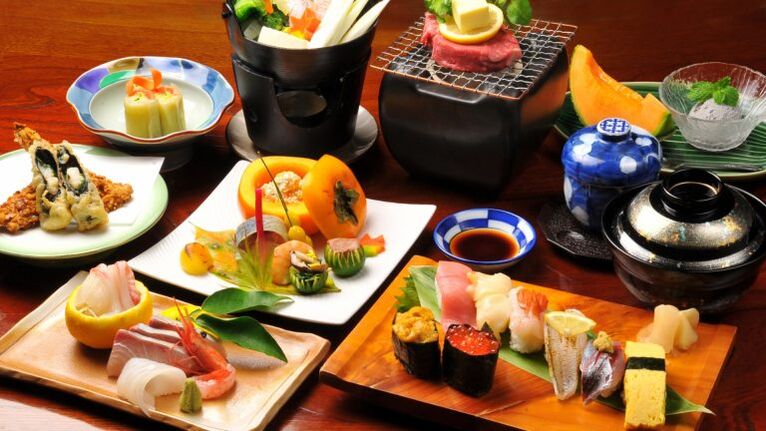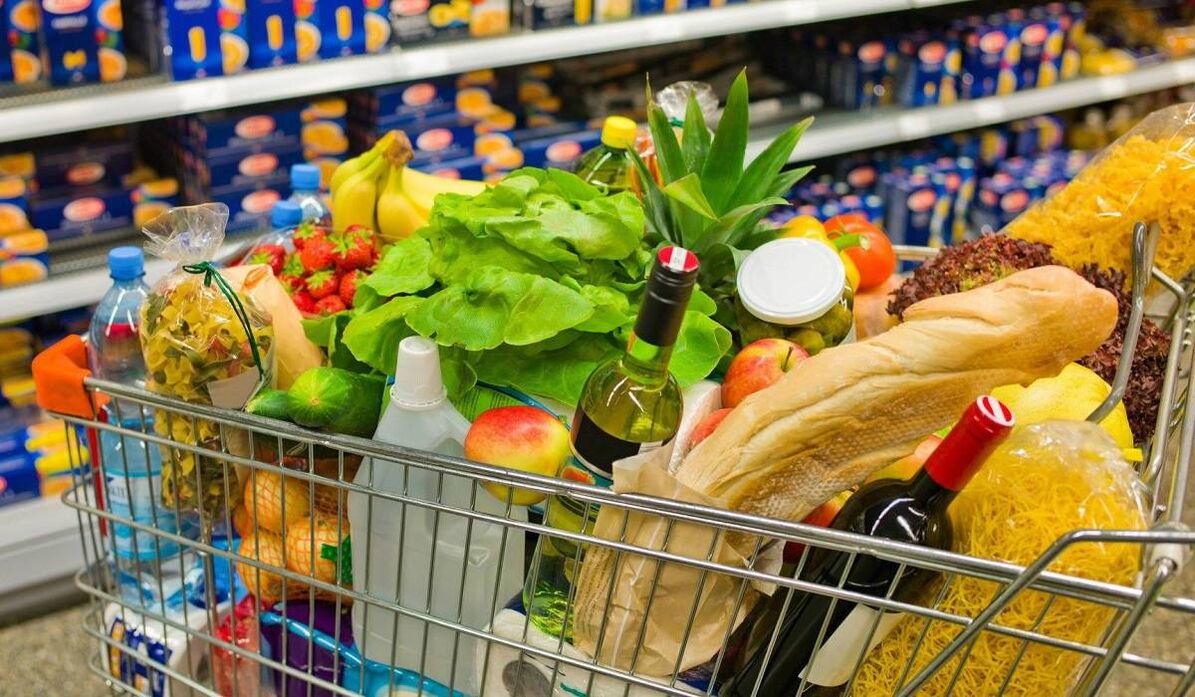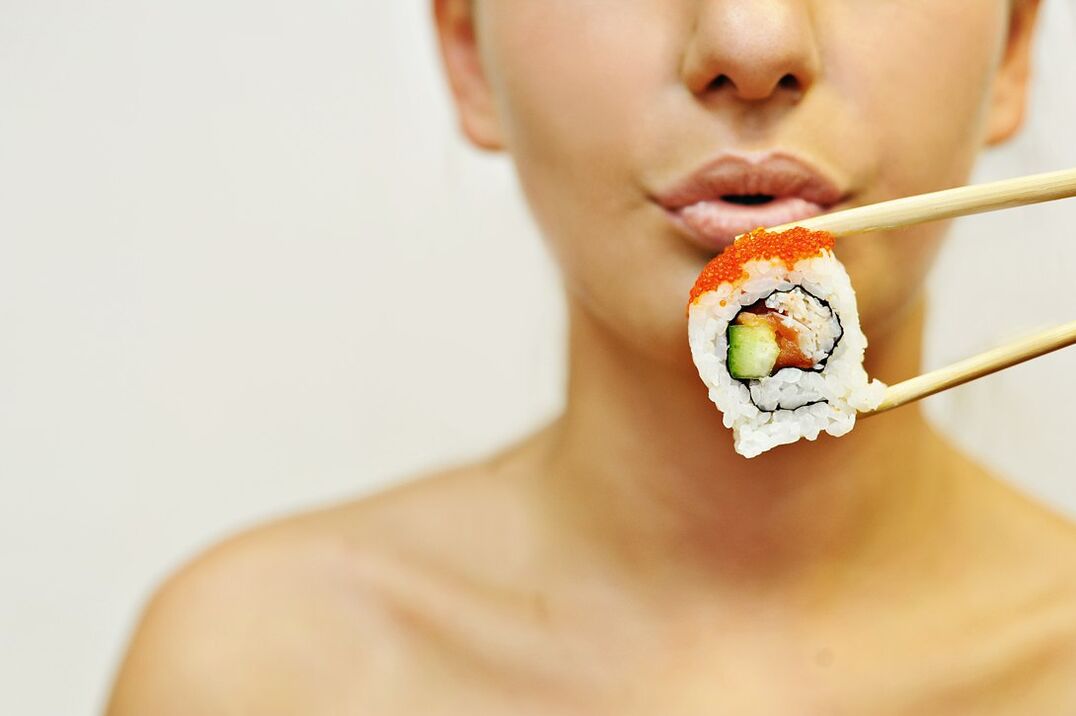In recent years, the Japanese diet has become very popular, combining both fast results and benefits for the body. Moreover, the main feature of this 2-week meal plan is that after 2-3 weeks, when everything returns to its original state, there is no such thing as a setback.
Japanese cuisine is becoming increasingly popular due to the growing popularity of Japanese cuisine in local cafes and restaurants. Today you can buy rolls in almost any dish or everything you need to prepare yourself. So what is the Japanese diet to lose weight?

The main features of the Japanese diet for 14 days
Let's take a brief look at what the Japanese diet is and what principles it is based on:
- The total period is 14 days;
- Low carb, low carb, high protein foods. Requires discipline and endurance;
- Total cost - no more than 2000 rubles for the entire period;
- Estimated results are between 5 and 8 kg;
- Repetition ability - no more than twice a year;
- Stability - high, with proper exit from the diet after two weeks, the result lasts a long time and without retreat;
- Contraindications: pregnancy, breastfeeding, diseases of the gastrointestinal tract (ulcers, gastritis, gastroduodenitis, etc. ), kidney and liver disease. Not recommended in case of heart problems. It is preferable to consult before starting a diet
Japanese diet to lose weight - a heated trend or real effectiveness?

The Japanese diet was previously completely unfamiliar. Moreover, the very concept of "diet" meant a significant reduction in food and calories, including hunger. Even with the popularity of this unique meal plan, many still believe that the 14-day Japanese diet will consist of sushi, green tea and, of course, rice. However, you should not evaluate this diet only with traditional Japanese cuisine, the only thing that will remind you for two weeks is seafood, eggs and green tea - products available in many countries around the world. This is a great advantage of the diet, because the diet will contain familiar foods that are not exotic and can cause indigestion or even allergies.
It is not yet clear how the Japanese 14-day diet relates to the Land of the Rising Sun. According to some reports, it was developed in one of the Japanese clinics, while according to others, this nutrition plan was assigned to Japan for strict discipline, menu and effectiveness. However, it does not matter where the diet comes from, it is incredibly effective and harmless if properly managed and followed.
As with any road, the Japanese menu is designed to reduce calories in the diet. It is based on traditional Japanese cuisine, which is famous for its lack of fatty foods and plenty of vegetables and fish. Naomi Moriyama, a well-known public figure and nutritionist, believes that the secret of Japanese women who maintain their beauty and slim figure until old age is nutrition. The key is low carbs and small portions.
Naomi estimates that Japanese people consume 25% fewer calories than people in any other country. For example, with many different snacks and even so-called fast food, chips, chocolate bars, fatty confectionery and even butter are not particularly popular in Japan. Even "street food" is low in calories, low in fat and carbohydrates. Therefore, the menu of the Japanese diet is fully consistent with the food culture, traditions and dietary principles of the country.
A proper diet is a must to burn fat! So think about what you want to achieve in the end. Are you sure you will see a toned and strong body after getting rid of the fat layer? You need the right exercises to tone your muscles and gain sexual volume! And we present a ready-made training plan diagram to make it easier for you!
The concept and basic rules of the Japanese diet

The sizes of parts of the population of the CIS and Japan are significantly different, so for many, a sharp transition can be a real test. But do not despair, because this plan is designed for two weeks, after which you can slowly return to a normal diet and favorite foods.
Protein will be the basis of your diet and a source of satiety. You can get it only from the following products:
- Fish;
- eggs;
- Chicken breast;
- dairy products;
- Lean beef.
Only crackers and a few types of vegetables will go like carbohydrates. For oils - olive oil. Also, fats will be present in fish and other protein products, which will prevent deficiency. With a significant restriction of calories, especially carbohydrates, the menu and scheme of the Japanese 14-day diet can be a real problem. However, it should be noted that the body quickly gets used to such a diet, and the second week will not be so difficult.
It is important to note that there is enough healthy fiber in the menu. Occurs in vegetables, can be consumed almost without restriction (only on some days). It eliminates gastrointestinal problems and improves digestion. Green tea and coffee are also included in the diet. They will not only allow you to stay awake and avoid fatigue, but also provide the body with large amounts of antioxidants. It is important that the tea is natural, colorless and tasteless, and it is preferable to buy coffee in beans and grind it yourself.
Looking at the 14-day menu of the Japanese diet, you can be sure that all the nutrients are in this diet plan, and the main changes mainly affected the size of the portions and the amount of food consumed. Basically, for most people, two weeks go by without any results, but if your body reacts very strongly to the breakdown of carbohydrates, then you should postpone the diet for the future and consult a doctor. The main symptoms for this will be headache, severe weakness and fatigue.
Drinking regimen is of great importance. You should consume plenty of plain water at room temperature. First, it will help improve digestion and make it easier to cope with hunger by simulating a full stomach. Second, it will allow protein products to be eliminated from the body. Another important point is to strictly follow the general plan. If you decide to seriously try and check how to lose weight on the Japanese diet, then you should consume only those foods and in the amount prescribed for each day. Substitutes are not allowed. You also cannot change or reschedule days.
The only exceptions are coffee and tea. In the morning, instead of coffee, you can drink a cup of tea, depending on personal preference. Sugar-free, of course. Salt is also a negative factor in the diet, but if you can not completely eliminate it, limit yourself to a minimum.
One of the main challenges is that in addition to low calorie content, eating small amounts a day is also considered. While other diets consist of 5 or even 8 snacks a day, the Japanese diet consists of only 3 meals. It is also worth remembering that you need to start the day with a glass of water, it "starts" the body and metabolic processes. Dinner should be eaten no later than 2-3 hours so that the food has time to be digested during sleep.
This is a strict diet, so a smooth introduction is recommended in the diet, with the exception of cut-offs. Thus, the body will quickly adapt to new conditions and the diet will be more comfortable. The easiest way to prepare would be to stop fasting completely at least 3-5 days before starting the diet, as well as to cut portions (eat more than half the size of a normal portion). Although this scheme looks very strict, it is completely balanced and does not harm the body, but also allows you to lose 5-8 kg in just 2 weeks.
Preparation period and food shopping

You will need:
- Coffee (ground or grain) - 1 packet;
- Natural green tea - 1 packet;
- Chicken eggs - 20 pieces;
- Lean beef (pulp) - 1 kg;
- sea fish (fillet) - 2 kg;
- chicken fillet - 1 kg;
- Extra Virgin olive oil - 0, 5 l;
- carrots - 2-3 kg;
- White cabbage - 2 pieces of medium size;
- eggplant or zucchini - 1 kg;
- Fruits (except grapes and bananas) - 1 kg;
- kefir - 1 l;
- Tomato juice - 1 l;
- lemon - 2 pcs.
In terms of principles and food lists, the Japanese diet is often compared and even mixed with a "chemical diet" - a nutrition plan developed in the United States. Its creator is Osama Hamdi, whose diet is actively used in the treatment of diabetes and obesity. The Japanese diet also uses the principle of sharply limiting carbohydrates and increasing protein intake, thereby changing the chemistry of metabolic processes in the body, triggering reaction chains that lead to a sharp decrease in weight. However, there is an important difference between these meal plans. The Osama Hamdia System contains an unlimited number of products that allow you to build muscle and rely on vigorous exercise. At the same time, the Japanese scheme has a serious quantitative limit and a short duration of only two weeks. This is a plus for those who want to get results quickly and can not run out of body for months, avoiding the usual diet.
Detailed menu of Japanese diet for every day

It is important to take this scheme very seriously, strictly following the recommendations. Attempts to break the scheme or add a product may result in worse overall results than expected. The menu for each day of the Japanese diet for 14 days is as follows:
Number of days 1
- Breakfast - pure coffee without milk and sugar;
- Lunch - boiled eggs (2 pieces), cabbage boiled in olive oil, 1 cup tomato juice;
- Dinner - 200 g of fried or boiled fish.
Number of days 2
- Breakfast - Coffee and 1 slice of rye bread;
- Lunch - 200 g of fried or boiled fish with boiled cabbage and olive oil;
- Dinner - 100 g of boiled beef and 1 cup of kefir.
Number of days 3
- Breakfast - a slice of rye bread (toaster) or a biscuit without additives. A cup of coffee;
- Lunch - fry eggplant or pumpkin in olive oil (in any portion size);
- Dinner - 200 g of unsalted beef, fresh cabbage with olive oil, boil 2 boiled eggs.
Number of days 4
- Breakfast - a fresh small carrot with the juice of one lemon;
- Lunch - 200 g of fried or boiled fish, 1 cup of tomato juice;
- Dinner - 200 g of fruit (any).
Number of days 5
- Breakfast - a medium carrot with the juice of one lemon;
- Lunch - boiled or steamed fish with a glass of tomato juice;
- Dinner - 200 grams of fruit (any).
Number of days 6
- Breakfast - a cup of coffee without sugar;
- Lunch - unsalted boiled chicken (500 g), fresh carrot and cabbage salad (season with olive oil);
- Dinner - one fresh carrot and 2 boiled eggs.
Number of days 7
- breakfast - a glass of green tea;
- Lunch - unsalted boiled beef (200 g);
- Dinner - your choice: 200 g of fruit, 200 g of boiled beef with a glass of kefir, 2 boiled eggs with 200 g of boiled fish or salad (carrots decorated with olive oil).
Number of days 8
- Breakfast - a cup of coffee;
- Lunch - 500 g of unsalted boiled chicken, cabbage and carrot salad (season with olive oil);
- Dinner - a small carrot with olive oil, 2 boiled eggs.
Number of days 9
- Breakfast - a carrot with the juice of one lemon;
- Lunch - 200 g of fried or boiled fish and a glass of tomato juice;
- Dinner - 200 g of desired fruit.
Number of days 10
- breakfast - a cup of coffee;
- Dinner - 3 small carrots (fry in vegetable oil), 1 egg and 50 g of cheese;
- Dinner - 200 g of any fruit.
Number of days 11
- Breakfast - a cup of coffee and 1 slice of rye bread;
- Lunch - fry eggplant or zucchini in olive oil (any amount);
- Dinner - 200 g of boiled beef, fresh cabbage with olive oil, 2 boiled eggs.
Number of days 12
- Breakfast - a cup of coffee and a slice of rye bread;
- Lunch - 200 g of fried or boiled fish, fresh cabbage with olive oil;
- Dinner - 100 g of boiled beef and 1 cup of kefir.
Number of days 13
- breakfast - a cup of coffee;
- Lunch - 2 boiled eggs, cabbage boiled in olive oil and 1 glass of tomato juice;
- Dinner - fry 200 g of fish in olive oil.
Number of days 14
- breakfast - a cup of coffee;
- Lunch - fried or boiled fish, fresh cabbage with olive oil;
- Dinner - 200 grams of boiled beef, 1 cup of kefir.
It is believed that this diet allows you to achieve the longest lasting and stable results without returning to normal weight. It is possible to maintain weight for up to 3 years after losing weight, but only if you strictly follow the diet and do not start to compensate everything with high-calorie foods immediately after the 15th day. Also, adapting a Japanese meal plan to your daily diet would be a great solution.













































